Just like a family can outgrow a home, businesses can outgrow an office space. With research suggesting that businesses relocate on average every seven years, whether it’s for business growth, company relocation, or simply a change of scene, moving offices can have a massive impact on your employees.
In the wake of a global pandemic, many businesses are looking to change their physical working environment in order to meet the necessary social distancing regulations.
Regardless of your organisational circumstances, as your business evolves and expands, there will eventually come a time when your current office isn’t enough to support all the personnel and technology you need. When that happens, you’ll find yourself facing a complex but necessary evil: change. While change can be a valuable thing in the business world, it’s also something that many employees and business leaders alike have trouble managing.
We’ve put together our ultimate office relocation guide to help you to run your office move smoothly, mitigate the adverse effects of change and position your move as a positive, exciting development for your business and your staff.
Step-by-step Office Move Checklist
Our helpful step-by-step checklist will help you to plan and prepare for your big office move and examine how to:
- STEP 1: Consider your office move needs
- STEP 2. Plan your office move
- STEP 3: Identifying costs and planning your budget
- STEP 4: Creating a project task checklist
- STEP 5: Prepare Your office equipment when moving offices
- STEP 6: Address Your Telecommunications System
- STEP 7: Manage Your Security When Moving Offices
STEP 1. Consider your office move needs
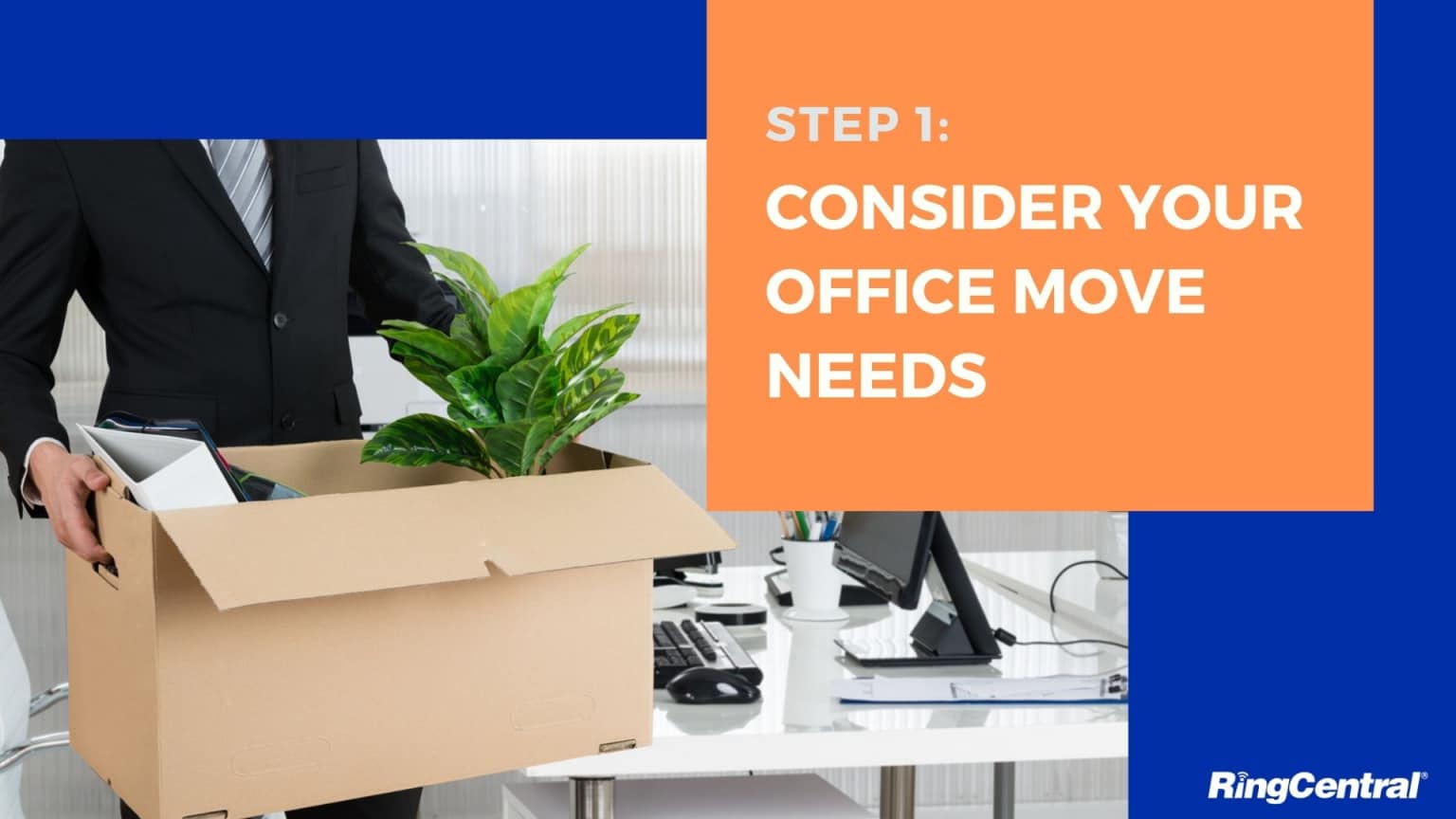
Before committing to the big move, it is important to assess the needs of your business. There are many reasons for moving office location, but identifying the reasons for relocating early on in the process can help you to form a more strategic, carefully considered office moving process.
Moving office location can boost the morale of your staff, improve productivity, and open your business up to a new talent pool. There are multiple reasons to move office location, but many businesses move for the following possible reasons:
- Business growth
As your business grows, it’s important to plan for expansions in terms of your physical environment. Relocating can help you to customise your office design in a way that suits your teams on a practical level, but also fits with your organisational ethos and values. Whether you’re looking to introduce more workstations, more open collaborative space, or provide more accessibility to meeting rooms, choosing a new office space that will suit your team’s needs in the long term is a key consideration for modern businesses looking for the perfect office for growth.
- Attracting clients
Your office space acts as a ‘shop window’ for your brand, so it needs to tell your clients what you stand for as an organisation. Having an office location that you feel proud of, and comfortable inviting your clients to is important. The space you inhabit as a business can leave a lasting impact on those who work with you Choosing an office space in an enviable location could help give your business more gravitas, and in some cases can even help you to attract new business.
- Improving productivity
Choose an office location with the productivity of your employees in mind. Staff wellbeing is key to productivity and morale, so be sure to consider work/life balance and health and wellness as a key driver for choosing a new office location. Does it have a gym nearby? Are there plenty of green spaces in the vicinity? Are there places nearby where employees can purchase lunch or snacks? Even smaller considerations such as natural light and open plan design can have a huge impact on the morale and productivity of your staff. Moving a business office and relocating to a more modern environment can improve connectivity, and can motivate teams and develop your employee engagement.
- Attracting talent
In addition to potentially attracting new business, your office relocation could potentially help you to attract a better pool of talent, to help you shape the future leaders of your organisation. If your business office is difficult to get to, in an undesirable area or a particularly rural location, it may be more difficult for great candidates to envisage their future as part of your organisation. As the face of your business, your office location should be chosen as an accessible hub for the next generation of your talented workforce, helping you to attract the right people to play a part in your future.
STEP 2. Plan your office move

A well-organised office move plan is critical in any transformation strategy – whether you’re moving to a new phone system or switching to a different office.
Make sure you follow these tips on creating an office relocation plan:
- Create a schedule for your office relocation with deadlines on when new technology and systems must be established.
- Analyse your new location and ensure that you understand its IT capabilities, facilities, and utilities.
- Blueprint your office space and think about the changes you may need to make to workstations, IT infrastructure, and fixtures.
- Consider how your office move will affect any existing projects you have in motion.
STEP 3: Identifying costs and planning your budget
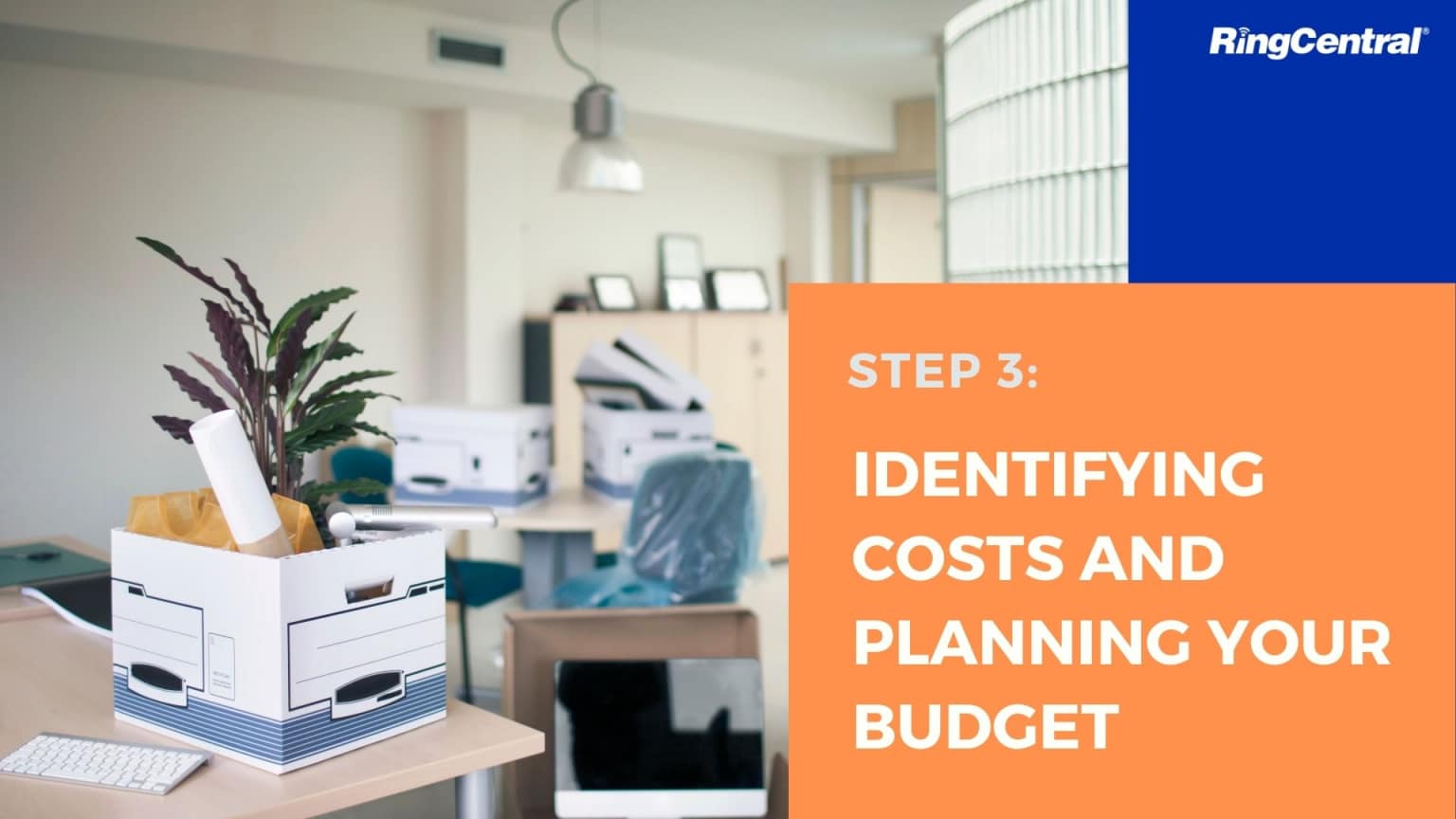
Moving offices can be costly and can also be a major upheaval in terms of your costs accrued by any downtime. It’s important to identify all of the possible costs for your office relocation ahead of setting a budget. This way, your office relocation project manager can establish what level of the budget might be reasonable and feasible.
In order to start researching costs and hidden expenses you may encounter, we’ve put together a list of typical moving expenses for consideration.
- Rent (including rent reviews and VAT)
- Deposits and dilapidation fees
- Contract break fees
- Administrative/agency fees
- Security
- Removal company/relocation suppliers
- Storage fees
- Insurance
- Service charges
- Refurbishment/interior design fees
- Utilities
- Connectivity and communications provider fees
- Post redirection
Download your office move expenses checklist as a handy starting-point template to collate your key office moving costs.
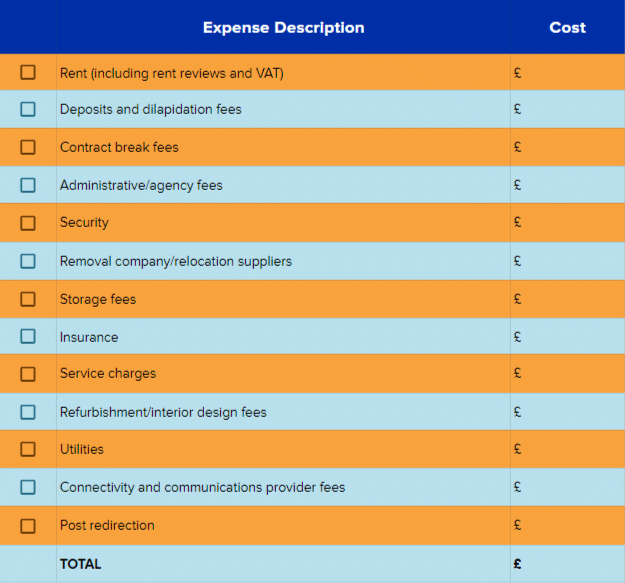
STEP 4: Creating a project task checklist
When you decide to change the office, you’ll need a plan in place so that you don’t miss any essential details in your relocation process.
If not handled efficiently, an office move can cause a number of issues and can significantly harm your bottom line. With a focus on retaining the utmost productivity and reducing disruption for your staff and customers, stepping back early to strategise and plan your major business manoeuvre carefully can prevent staff frustrations, missed invoices, and damaged customer relations.

Having established a budget and anticipated the office removals costs, you’ll need to put together a comprehensive project checklist with clear goals and objectives which can be easily followed by your project team and staff. Include measurable goals regarding timescales and minimising downtime and include this in your comprehensive and feasible task checklist.
Remember, ensuring that you can prepare everything ahead of time and make the move on the day with minimal downtime and minimal disruption to your staff is a key consideration when project managing your imminent office move.
Do’s and don’ts to include in your checklist:
Do:
Appoint your office move manager
You need to appoint one person who can head-up your office relocation project. While you will need buy-in from your entire team, and your manager will need people to delegate to, your office move will need one go-to person who can be responsible for budgeting, planning, and responding to any enquiries regarding your office move.
Allow plenty of time for the planning process
The planning process of your office move should really start around 3-6 months ahead of your office move deadline. Be sure to leave yourself enough time to budget, research, delegate tasks, and ensure all your logistics is feasible in that timescale.
Establish your priorities (but not just within the senior leadership team)
Make sure you know what you are looking for with your office move. You might want to focus on simply reducing your rental costs, while your employees might need better parking or a safer environment when they leave late at night. Conducting a survey with your employees can help you to feel more employees engaged and involved with the project, so be sure to take their needs into account when you collate your priorities.
Outline your budget criteria
Once you have a general idea of what everything should cost, it should be easier to establish what your overall budget should be. Remember to always overestimate your budget so that you have a little room for manoeuvre in case things add up a little more than you anticipated.
Create a realistic timeline and stick to it
Set a reasonable timeline outlining deadlines clearly and appointing members of your project team to specific tasks. Try not to miss deadlines; the more you manage to tick off the checklist early, the less stressful your moving day (and the weeks preceding it) will be.
Don’t:
Don’t try and do the move yourself
While it may be tempting to save costs on an office removals company or manage the project solely on your own, make sure you share the load. Don’t underestimate how extensive an office move project can be. Be sure to delegate and hire a trustworthy removals company to help you do the heavy lifting.
Don’t underestimate your budget
Don’t tell yourself you might be able to cut corners on the finer details of your office move. There’s no denying it will be costly. Accept that and leave yourself a little leeway so that if things turn out more expensive, you have a buffer. If they don’t, treat your team to a little something extra to help everyone to celebrate their new work environment.
Don’t leave it all until the last minute
Procrastinating with regards to your relocation process is not a good idea. As the saying goes, moving house is the most stressful life event we have to overcome. Moving offices certainly doesn’t come without significant stress either, but if you stick to your time schedules and don’t cram in your logistics at the end, your moving day might just run smoother than you expect.
Don’t exclude your staff or your customers
Sharing your plans and letting your staff know how they can contribute can have a huge impact on your staff morale. Getting your employees on board with the office move is integral to your employee engagement is very important in terms of getting mass buy-in from your workforce. In the same way, communicating early with your customers and letting them know about your office move could help strengthen your customer relations in the long run.
Don’t forget the finer details
Making sure you brainstorm with your project team can be the key to making sure you have thought of all the finer details. For example, make a list of the general supplies you might need to procure such as the following:
- Storage boxes in varying sizes
- Packaging papers and bubble wrap
- A packing table / dedicated packing desk
- Permanent markers and labels
- Air-filled padding
Your ultimate office move checklist
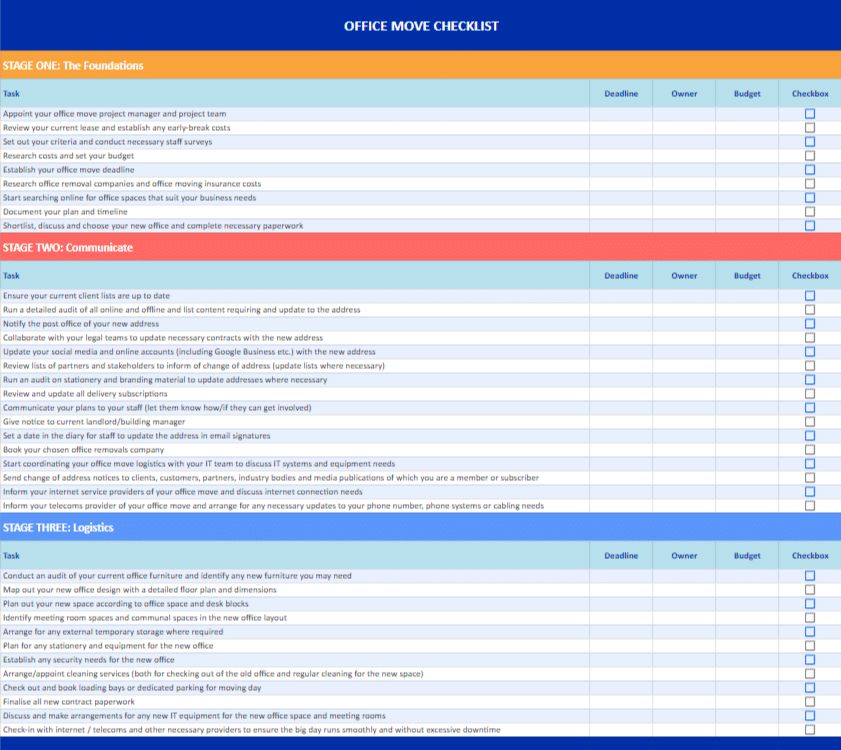
Stage one: lay the foundations
- Appoint your office move project manager and project team
- Review your current lease and establish any early-break costs
- Set out your criteria and conduct necessary staff surveys
- Research costs and set your budget
- Establish your office move deadline
- Research office removal companies and office moving insurance costs
- Start searching online for office spaces that suit your business needs
- Document your plan and timeline
- Shortlist, discuss and choose your new office and complete necessary paperwork
Stage two: communicate
- Ensure your current client lists are up to date
- Run a detailed audit of all online and offline and list content requiring and update to the address
- Notify the post office of your new address
- Collaborate with your legal teams to update necessary contracts with the new address
- Update your social media and online accounts (including Google Business etc.) with the new address
- Review lists of partners and stakeholders to inform of change of address (update lists where necessary)
- Run an audit on stationery and branding material to update addresses where necessary
- Review and update all delivery subscriptions
- Communicate your plans to your staff (let them know how/if they can get involved)
- Give notice to current landlord/building manager
- Set a date in the diary for staff to update the address in email signatures
- Book your chosen office removals company
- Start coordinating your office move logistics with your IT team to discuss IT systems and equipment needs
- Send change of address notices to clients, customers, partners, industry bodies, and media publications of which you are a member or subscriber
- Inform your internet service providers of your office move and discuss internet connection needs
- Inform your telecoms provider of your office move and arrange for any necessary updates to your phone number, phone systems or cabling needs
Stage three: prepare your logistics
- Conduct an audit of your current office furniture and identify any new furniture you may need
- Map out your new office design with a detailed floor plan and dimensions
- Plan out your new space according to office space and desk blocks
- Identify meeting room spaces and communal spaces in the new office layout
- Arrange for any external temporary storage where required
- Plan for any stationery and equipment for the new office
- Establish any security needs for the new office
- Arrange/appoint cleaning services (both for checking out of the old office and regular cleaning for the new space)
- Check out and book loading bays or dedicated parking for moving day
- Finalise all new contract paperwork
- Discuss and make arrangements for any new IT equipment for the new office space and meeting rooms
- Check-in with internet/telecoms and other necessary providers to ensure the big day runs smoothly and without excessive downtime
STEP 5: Prepare Your office equipment when moving offices
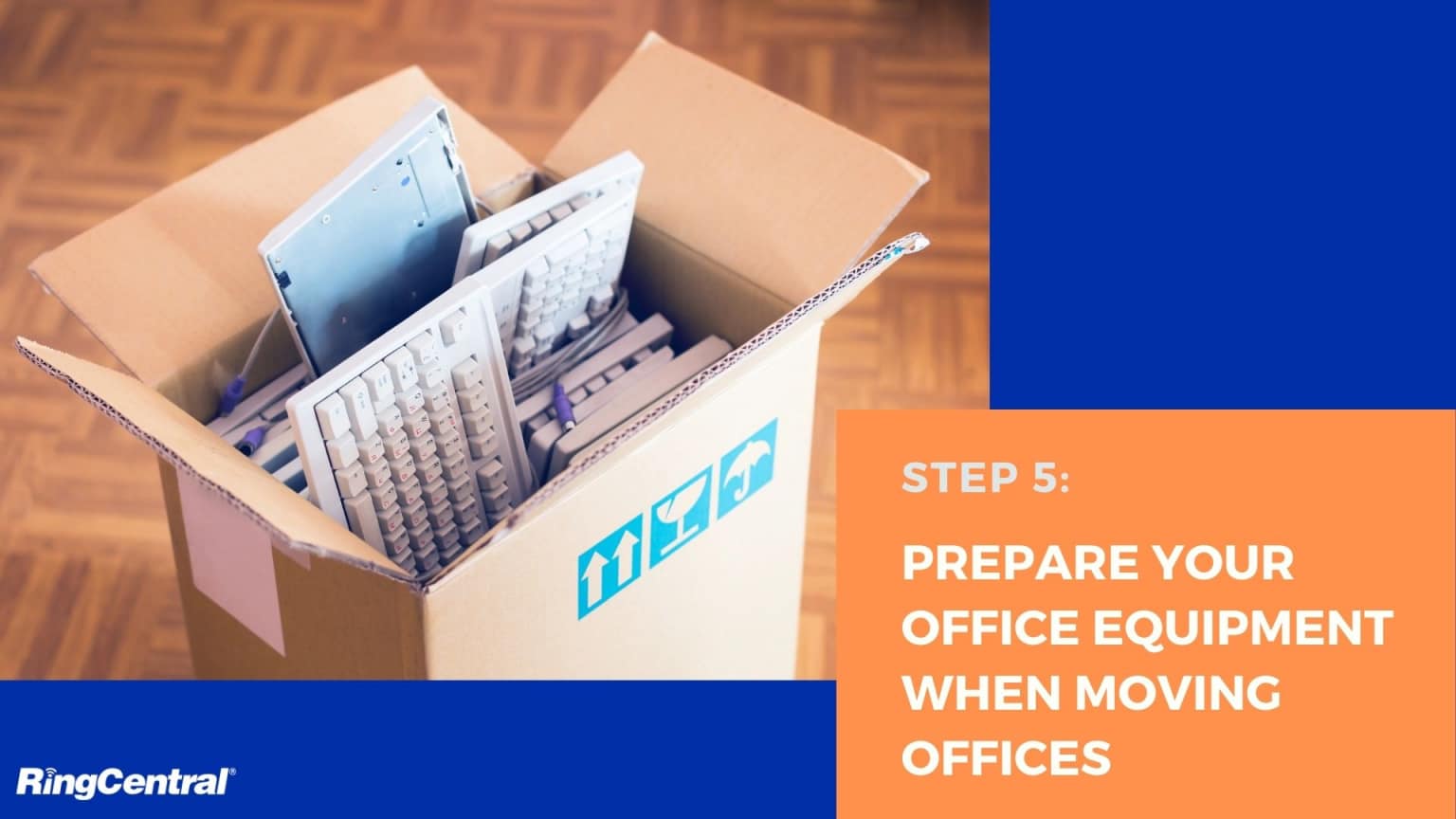
What do you plan on doing with your physical hardware when you move to a new office? If you plan on moving to cloud communications, or you already have a hosted system, then all you need to do is transport your desk phones and other endpoints to your new location. If you have a complete business communication system in place, you may need to think about whether it’s time to upgrade, or whether it’s worth taking it with you.
Remember to consider these things when preparing your office equipment before your moving offices:
- Make a checklist of all the IT and telecommunications assets you want to bring to your new office.
- Determine whether all your assets will work well with the IT infrastructure in your new location.
- Decide if it’s time to upgrade various parts of your communication strategy by switching to the cloud.
- Consider any upcoming IT/Telecoms acquisitions or upgrades and determine whether they can be accomplished at the same time as the move.
STEP 6: Address Your Telecommunications System

As mentioned above, the hardware in your telecoms system is just one component to address during your office move. You’ll also need to think about various other parts of your business communications strategy.
Consider this telecommunications system office move checklist:
- Assess what you need to do about the voice data in your new system. Are you going to embrace new technology and cloud solutions?
- Determine how many phone lines you need and notify your telecoms provider if you want to stay with them.
- Decide what you’re going to do with your existing phone numbers. If your customers already know them, then it may be worth keeping them the same.
- Explore any upgrades that may be available as part of your move. Does additional bandwidth make new communications options available?
- Make backups of any voice or communication data that you’ll be taking with you. Cloud storage will ensure that you can get back up-and-running quickly on the other side.
STEP 7: Manage Your Security When Moving Offices

Finally, remember not to overlook the administrative details during your office relocation. Now is the perfect opportunity to consider your network security and make sure that everything is safe.
Things to remember when managing your network security before an office move:
- Create an inventory of all your assets and resources and develop a plan for protecting your information in transit.
- Create a list of employees and the network access rights they should have.
- Detail and update your security policies if necessary before the office relocation.
- Assess contracts with security vendors and look into the security solutions available from your telecommunications provider.
Moving offices can be a complicated experience at the best of times. Fortunately, with RingCentral’s flexible cloud-based communication systems, you can minimise the stress of your move, and reduce the disruptions to your business.
Originally published Sep 23, 2020, updated Jan 17, 2023
